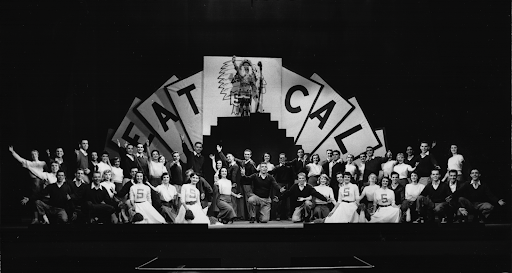It’s the year 1960, and you are a Stanford student walking to lecture on a crisp morning. Suddenly, you hear a rustle from above. The leaves? Maybe a squirrel? When you look up, your eyesight is flooded with a blitz of leaflets falling from the sky. Close to 10,000 papers litter the Stanford campus. You reach down, pick one up and read the bolded text: SURRENDER.
There could only be one possible culprit: UC Berkeley.
While most Big Game weeks do not feature a Cal fraternity renting a plane and showering Stanford with intimidating pamphlets, demanding the University to “surrender,” the decades-long rivalry has endured many eras. For example, also in 1960, when Stanford students allegedly stole the coveted “Axe” trophy from a Cal safe, a Stanford student was stripped of their clothing and the Stanford student body president was battered with cans of beer. Without a doubt, the rivalry was fierce.
Recently, however, some have noted that the famed rivalry has grown soft. Peter Hartlaub of the San Francisco Chronicle cited the switch to the Atlantic Coast Conference (ACC), which he said is a reason for a newfound solidarity and a cooling of tensions amongst the universities. While the football side of the rivalry has softened, other aspects have only escalated. For instance, when searching stanfordrejects.com, the browser redirects you to Cal’s official website.
This competition between college prestige has turned a football rivalry into something deeper. As acceptance rates to elite universities like Stanford and Cal continue to decline, the fever around college prestigiousness has only soared. Stanford students frequently shout “safety school” towards Cal at the Big Game, and one can only hypothesize that these comments may nettle Cal students a bit more than before.
Every student at Stanford or Cal understands they attend a renowned college, and for many it is this selectivity that led them to accept their admittance letter. The influence of this rivalry on either university’s prestige subliminally challenges many students’ decision to apply or commit. It certainly carries more weight than a football team losing a single game. From personal experience, one of my high school teachers — who did not even attend Cal, but was a fan of the athletics program — called me a “pussy” from afar after I committed to Stanford in the spring. I laughed at his brash humor, though the comment raises an interesting question: How playful is the Stanford-Cal rivalry? And where do students draw the line between seriousness and fun?
Allegedly, when Stanford was constructing Hoover Tower, the University inquired about the height of Cal’s tower, the Campanile. Cal responded with a fake measurement to ensure that the Campanile would remain the tallest. While there appears to be nothing genuinely hateful about the rivalry’s history of “tricks,” the fact that one of them directed the architecture of Stanford’s most recognizable landmark must be more serious than taunting chants at a football game.
Another recent development has also intensified the rivalry. In the last several years, both universities have become well-known for their “start-up” cultures. Most students at Stanford and Cal are not football players; many more of them want to be start-up founders. So, has the rivalry trickled into this professional arena?
Kia Kokalitcheva, a San Francisco based technology and business reporter at Axios, wrote for VentureBeat in 2014 about her disappointment, as her alma mater, UC Berkeley, “lag[s] behind” Stanford’s start-up success. That year, Cal announced millions of funding to invest in startups, which Kokalitcheva said was the school’s attempt to “catch up” with Stanford . If the football rivalry is indeed dying out, maybe both schools will no longer duel at Cal or Stanford stadium but instead in this new “startup arena.”
With the rivalry now permeating these professional spheres, has it become more serious? It is reasonable to assume professional reputation is chief for many students at Stanford, and matters more to these students than the record of football or other athletics. The new additions of college prestige and startup success to the Stanford-Cal rivalry undoubtedly carry darker undertones. However, if a bit of real competition pushes both universities’ athletics and academics to improve, that’s a rivalry worth having.
